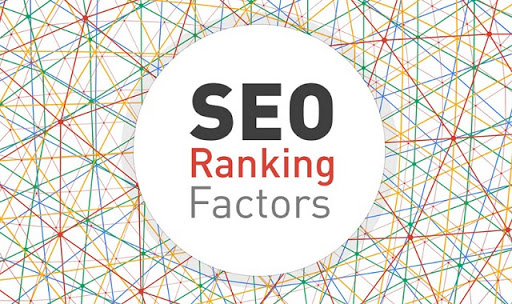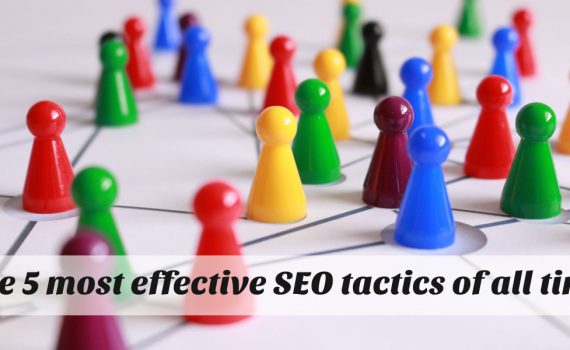
The most important SEO ranking factors you need to know
Category : Seo Consulting
Here, the Google ranking factor really matters to lift those businesses up. You can find lots of information floating around these days regarding the website rank. Google ranking factors offer webmasters, Search Engine Optimisation and content marketer with the recent insight about essential ranking factors for high ranking search results.
To be clear, Google features a very complex ranking algorithm and will take account of more than 200 different ranking factors. However, back in 2016, so quite recently, Google basically confirmed its top three ranking factors: Link Profile, Content quality, and User Experience metrics.
1. Backlinks
Backlinks are one of the most important part of the search algorithm. With this, they are also one of the most misunderstood. Backlinks are other website owners that mention another websites domain, by creating a link to your websites content. Many website owners use these links to their advantage. When you have multiple backlinks from high-authority domains, your chances to ranking higher raises substantially for your targeted keywords.
Backlinks might sound great, but there are many things that can cause havoc and put you in trouble. Google explains that backlinks calculate a link score. This score is calculated by examining every incoming link to your website by the other websites quality score (aka PageRank) and the number of links to the site.
Link quantity is very important for Google, but more importantly is the quality of the link you are receiving to your site. You need to focus on gaining high domain authority sites that have many high quality linking domains. When creating or asking for backlinks, stay away from spammy, low quality websites. If Google finds you on too many spammy sites, your rankings can drop substantially, and at times, your website can get de-indexed from Google.
Also, if you outsource any backlink project to someone else, you need to know if they will not add you into a load of low quality, spammy sites. You must trust this individual by doing some research on their work. Some backlinks are so spammy that they can throw your whole backlink profile on Googles blacklist, eventually leading to a Google penalty.
We can think of inbound links or backlinks as the vote of confidence in the digital world. When a website links to your content, they are saying that your page is reliable, credible, and trustworthy. When the link is coming from a relevant, high-quality website, it’s like getting a recommendation letter from a famous person in your industry (read: it’s very valuable).
Nowadays the quality of the backlinks is significantly more important than quantity. In fact, getting too many low-quality backlinks at any given time might get your site penalized by Google.
While inbound links are the most important of the three, that’s not saying outbound links and internal links are not important:
– Outbound links and proper internal linking structure can help improve your site’s relevance. Linking to an authoritative site, for example, can tell Google that you are a legitimate content creator for a specific topic. A proper internal linking practice can also help Google with the indexation process.
– Proper external links essentially tell Google about the niche/industry you are in, the topic you are covering, the potential competitors, and so on. In short, you are helping the search engines to index and structure the whole internet.
– Linking to relevant content (that is already ranking) can provide additional value for your audience (which can indirectly affect ranking).
– When you link to others, you let the other party notice your site and your content. In the future, they might return the favor and link your content. In short, this can be the start of a fruitful relationship.
2. Quality Content
The quality of your content is the center of your SEO, period. No amount of SEO optimizations and state-of-the-art strategy can help low-quality content. Think of SEO as a way to amplify the performance of high-quality and relevant content and not the other way around.
In the past, SEO content is solely about optimizing the content for the target keywords, and thus we aim for a certain keyword density. It’s very important to understand that today, SEO is no longer solely about keyword optimization.
Instead, the most important thing to focus on is whether your content can meet the user’s search intent. In general, there are four different types of search intent:
– Informational intent. The user is simply looking for information. For example, a user might look for information about SEO by using the “what is SEO” search query. In this case, we can provide educational or informational content to meet this user’s needs.
– Transactional intent. Here, the user is searching for a product/service with the intention to buy. Nowadays, however, people might search directly on Amazon when they have transactional intent. This intent is usually identified when the user uses “buy” in their query.
– Comparison and Investigation. The user has the intention to buy in the future or is considering to make the purchase by comparing different products/services, check for online reviews, etc. When a user uses queries like “compare” or “review”, it is a strong sign they are having this intent.
– Navigational intent. Users with this intent are trying to get to a specific website. For example, we might type “Instagram” in the search bar for convenience’s sake.
User can have all four of these search intents with various queries, so it’s very important to develop a wide variety of content to cover all of these intents.
Google is getting better and better at recognizing how content can cater to a specific intent. Google BERT, the latest algorithm update, allows Google to better understand the context of long-tail, complex queries.
Content optimization for SEO is a very complex subject, but in general, it’s about being better than the other ranking content. Do a quick Google search of your target keyword (more on this later), and analyze the top-ranking pages (if possible, analyze all pages featured on the first page of the SERP). We generally have two options:
– Develop a better, longer, more in-depth content than these competitors.
– Be different, and cover the keyword from a unique angle.
Which one is easier? In most cases—if the opportunity presents itself—, being unique is relatively easier, but not saying it’s easy.
Content quality and relevance are extremely related to backlinks (as discussed above). Good content will always get linked, sooner or later. On the other hand, no amount of promotion can help low-quality content that is not relevant to get authoritative backlinks.

important SEO ranking factors
3. User Experience Metrics
To reiterate, Google search’s mission is to provide relevant and reliable search results for its user, and the Google search algorithm is constantly being improved to achieve this mission.
One of Google’s major improvements in accordance with this objective is the introduction of Google RankBrain. RankBrain is Google’s first AI-based algorithm that is launched in 2016, and with its machine learning capability, Google is now getting better at measuring and recognizing these user-experience metrics in real-time:
– Bounce rate: the percentage of visitors that leave your site after viewing just one page (single page visit). It can be after one second or one hour, what matters is they leave after just a single page.
– Dwell time: that is, how long a visitor spends on your site. They can view just one page or 100 pages, but this metric is about the total time spent.
– Click-through rate (CTR): the percentage of users that click on SERP results and visit the website
These three metrics combined, essentially provide Google with the information whether your site is relevant for the user, according to the user’s search query and search intent.
4. Increase page speed
Mobile page speed is an official ranking factor. As much as 53% of mobile site visitors leave a page that takes longer than three seconds to load. All this once again proves that site speed should be among the top concerns for website owners.
To ensure your site performs well, regularly check your pages’ load time and performance with Google’s PageSpeed Insights or any other third-party tools. They will help detect what slows your site down and recommend how to correct speed issues.
Make sure none of your content elements hamper your pages load. Consider resizing large images, eliminating slowing elements or those that are not supported by mobile browsers (like Flash, for example).
5. Mobile performance
Even though it’s closely connected with user experience, I believe this topic deserves a separate paragraph.
Google tends to rank higher the websites that perform better. Moreover, since the introduction of mobile-first indexing, as well as Google’s Mobile Speed Update, mobile websites performance has officially become a significant ranking factor.
Remember, all things mobile became possible due to the increased use of smartphones. To remain the top search engine, Google had to match the changed user behavior. So now Google’s crawling, indexing, and ranking systems are prioritizing mobile site versions over desktop. And this is what you should do to ensure your website meets the new reality.
Related content 5 clever SEO tatics to speed up website ranking
_______________________________________________________________________________
Please contact us for seo service packages at TDHSEO.COM.
TDHSEO Team
Email: tdhseo@gmail.com
Skype: tdhseo
https://www.facebook.com/tdhseo
Thank you!

